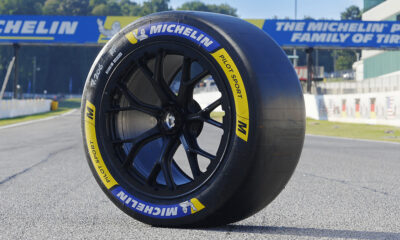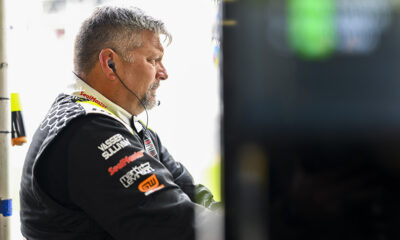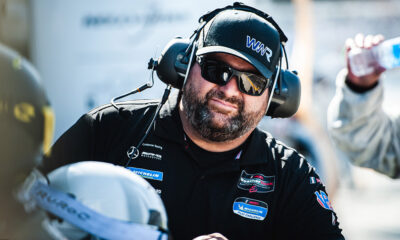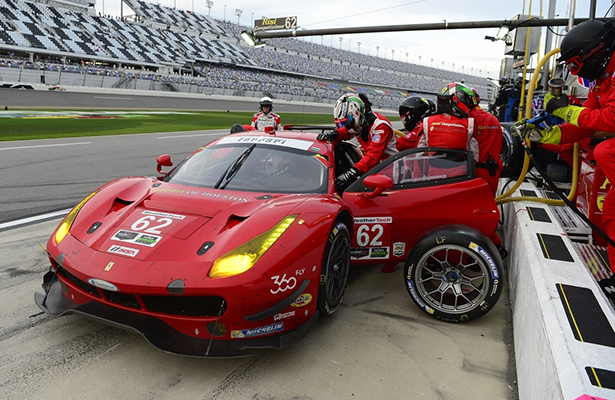
Photo: Michelin
Giuseppe Risi was not happy.
One of the most successful team owners in sports car racing worldwide was almost in tears as he met with Karl Koenigstein of Michelin at the 2008 American Le Mans Series Sebring winter test.
But first, some background:
The Michelin Way
Race fans in other forms of motorsport or single specification classes may occasionally see a tire engineer make a few pyrometer readings on a tire and hand a slip of paper to the team before heading to the next car on pit road. That isn’t how Michelin works.
Michelin approaches its IMSA WeatherTech SportsCar Championship and Le Mans programs in a very different manner.
“We embed an engineer with each of our technical partner teams and they become an integral part of that team,” said Ken Payne, who succeeded Koenigstein as the motorsports technical director of Michelin North America in 2012.
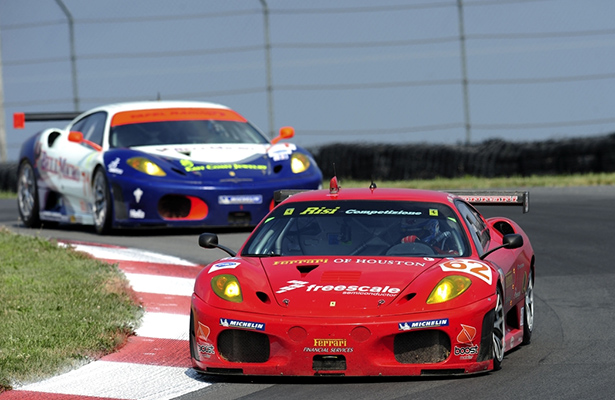
Photo: Michelin
The Risi Ferrari to Michelin Story
As the 2006 American Le Mans Series season approached, Risi was finalizing plans for new cars, engines, factory drivers, and technical support for a Ferrari 430 GT campaign.
Risi was convinced that he needed one final piece to build a champion. He wanted Michelin tires, but Ferrari had an agreement with another tire maker.
“I said that we must have Michelin tires to win,” said Risi. “Ferrari said that the cars racing in Europe and Asia were on another tire. We wouldn’t be able to share data.”
“I repeated that I needed to have Michelin tires in order to win.” said Risi.
“They said ‘but we get the other tires for free and we have to pay a lot for the Michelin tires.’”
Risi held firm. “Finally, I said, ‘then keep your cars. There is no point in me racing if I can’t win and I need Michelin tires to win.’”
The factory relented and Risi won four races and the 2006 team championship.
Along the way, the factory drivers carried the word to Ferrari that the Michelin tire performance was notably higher, and the Risi team quickly recognized the value of the embedded Michelin engineer.
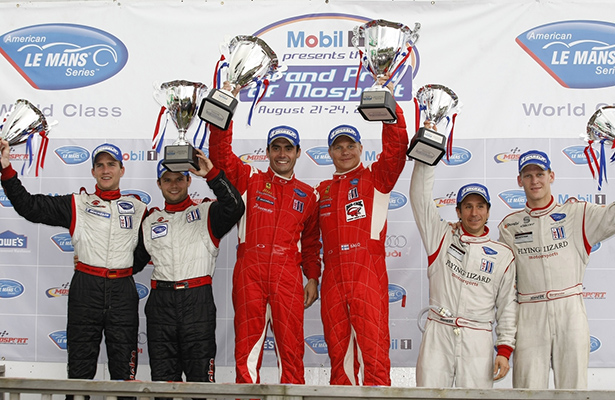
Photo: Michelin
Back to that Sebring Meeting
Risi Competizione was flying high, having claimed the 2007 American Le Mans Series GT manufacturer, team and driver championships and eight GT class race wins.
But Koenigstein had just advised Risi that Michelin would be moving its engineer, Robbie Holley, to a new prototype team for the upcoming season.
“You can’t do this!” said Risi. “We love Robbie. Robbie is part of our family.”
“I know that you love Robbie, and he has done a great job,” said Koenigstein, “but there is no easy way to do this. We need Robbie on our Prototype program.” He then opened the next chapter.
“We have a really good young engineer, Matt Hanlon, to work with you,” said Koenigstein. “Matt is very bright. He’s a graduate of Virginia Tech, and he likes to win, too. You will like Matt. Please give him a chance.”
Risi agreed and the team reeled off GT class victories at Le Mans and Petit Le Mans in 2008, and followed that by sweeping Sebring, Le Mans and Petit Le Mans in 2009.
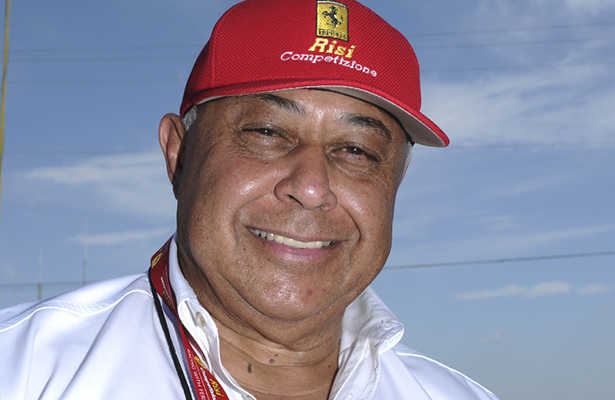
Photo: Michelin
Sebring Deja vu
So, the Risi team was riding an amazing streak of five consecutive major endurance wins when Koenigstein came calling again during the 2010 Sebring winter test.
When he entered the trailer, Giuseppe Risi was one step ahead. He immediately pointed his finger and laughed as he said “NO! You can’t take Matt! We love Matt; he is part of our family!”
They shared a laugh and a promise that Hanlon would remain with the team through the first part of the season and Le Mans. Sure enough, the Risi team won Sebring to extend its incredible run to six consecutive majors.
Before long, all of the Ferrari factory GTs switched. Today, all of the Ferrari teams in the WeatherTech Championship GTLM open tire class and the FIA World Endurance Championship race on Michelin tires.
How it works
Matching the right engineer with a team is a combination of technical skills, personalities and balancing the Michelin engineer’s non-race responsibilities in the design, development, testing and production of both race and street tires with the race team’s schedule.
In some cases, like Corvette Racing, and the new Chip Ganassi Racing Ford GT programs, the designated Michelin engineer leads the development of both the race tires and the corresponding production car tires.
“You can’t have a shorter feedback loop than that,” said Payne.
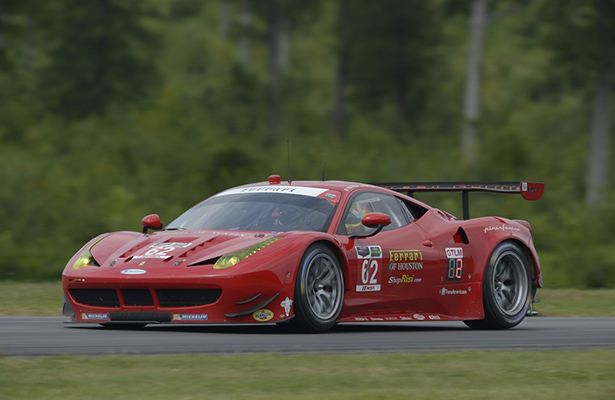
Photo: Michelin
Keeping Secrets
The Michelin engineers embedded with each technical partner team do not share data with other team’s Michelin engineers.
Each strictly maintains total confidentiality on their respective team’s race plans, set-ups, tire use, and team information.
Payne and Holley, now the race operations manager, are the only two in the Michelin group who know what is going on with every car.
They synthesize the data and provide direction based on the total picture to each engineer, who then works with his or her team to optimize that technical partner’s chance of success. They also monitor developing weather, track conditions or safety related issues.
“We want all of our teams to perform at the highest possible level while respecting our prescribed operating conditions and extracting the maximum value from our tires,” said Payne.
“And all of our engineers love walking back to the Michelin compound after having helped their team win the race.”
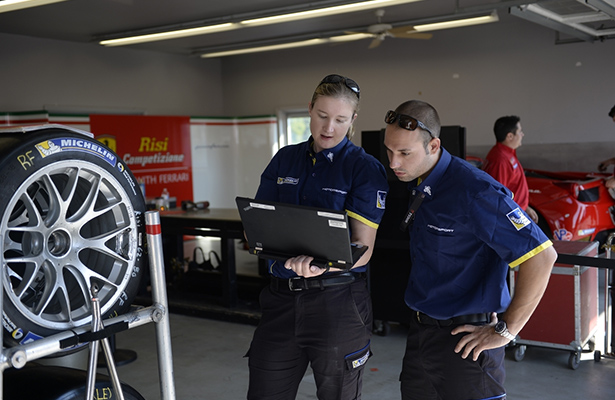
Photo: Michelin
2016 Update
Today, with the new Ferrari 488 GTE, the Michelin engineer at Risi Competizione is Michelle Phillips, a graduate of Clemson University, Formula SAE Racer and championship winner in her own right.
“All of our Michelin engineers; Robbie, Matt, and most recently Evan, have been quite good,” said Risi’s legendary leader Dave Sims.
“Michelle is terrific. In fact, she may actually be the best tire engineer that we have ever had.
“[She] worked with us for part of last season and she and Ken worked out her assignments so that she could be with us for the entire 2016 season.
“Michelle is already a valued part of our Risi family and I think Giuseppe will lock the door of the trailer if he sees Ken coming to take Michelle away!”
And that is how Michelin races.


















